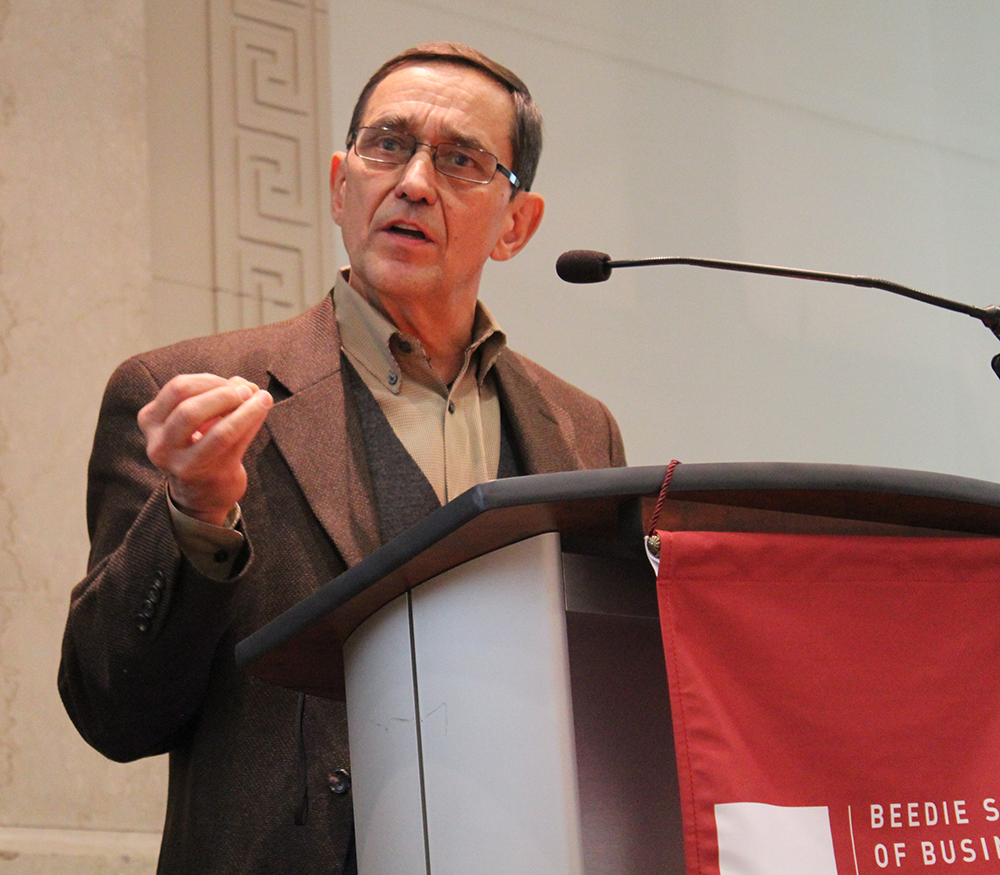How organizations can use multicultural employees to spark innovation
Feb 16, 2016
Beedie School of Business Professor of International Management David Thomas’ new book focuses on how organizations can use multicultural employees to innovate.
A new book from Beedie School of Business Professor of International Management David Thomas indicates that multicultural employees are an under-utilized resource within organizations – and if correctly nurtured can be used to harness in innovation.
The book, The Multicultural Mind: Unleashing the Hidden Force for Innovation in Your Organization, details numerous ways that multiculturals can spark innovation in organizations. Thomas gave a brief synopsis of the book at a special launch event, held at the Segal Graduate School of Business on February 15.
Thomas defines multiculturals as people who have internalized values, attitudes, and beliefs of more than one culture. He compared them to composite materials, in that they are lighter, cheaper, stronger, more flexible, and particularly suited to their task – however they take longer to develop.
“There was a time when all organizations needed to do to thrive was to improve, but now just to survive they need to innovate – and the secret weapon to innovation in organizations may be the multicultural mind,” said Thomas. “We used to think that people had one cultural identity, and much of our focus was on managing those differences. Now we have to be concerned with cultural differences that exist within people. This changes how we understand diversity.”
One of the most important aspects of multiculturals is that they think differently having been exposed to multiple cultural knowledge systems. Evidence exists that indicates that a multicultural experience results in creativity, and that a multicultural mind possesses several positive traits: a broader worldview; perceptual acuity; heightened sensitivity; empathy; and cognitive complexity.
Thomas’ book outlines numerous roles that fit multicultural people very well within organizations, depending upon how those organizations manage their multiculturalism. Working within teams, multiculturals excel as bridges, integrators, and mediators. They can also act for the organization as boundary spanners, helping other employees by exchanging, linking, facilitating, and intervening.
In order to help multiculturals take on these roles it is necessary for organizations to foster a collegial environment. They can do so by ensuring that multiculturals are intrinsically motivated by their jobs. To achieve this effect, organizations should keep their employees challenged in their roles. They should also ensure that not too much control is exerted over employees in order to provide flexible situations for them, as strong cultures create strong situations that constrain thought.
Organizations should ensure strong communication between employees so as to facilitate creativity. Finally, Thomas also said that sufficient resources should be provided to employees – though this did not exclusively refer to financial resources. “The most overlooked resource is time,” he said. “We have long known that multicultural teams are more creative but they need time to get there.”
In closing, Thomas posed the question as to whether every organization can develop the multicultural mind. He offered an example of an exercise that multinational financial organization PwC utilizes to achieve this goal. As an organization with partners acting as legally separate entities in some 150 countries, PwC regularly sends individuals from across their global operation to developing countries, where they are placed in small teams of five to solve a problem that exists there.
“They have multicultural teams operating in a foreign environment – this models the kind of development that multicultural people go through when trying to figure out their cultural identity,” he said.
Copies of The Multicultural Mind: Unleashing the Hidden Force for Innovation in Your Organization were available to purchase at the event, with all proceeds from sales on the night benefiting Beedie students competing in case competitions.
About Ross MacDonald-Allan
Twitter •